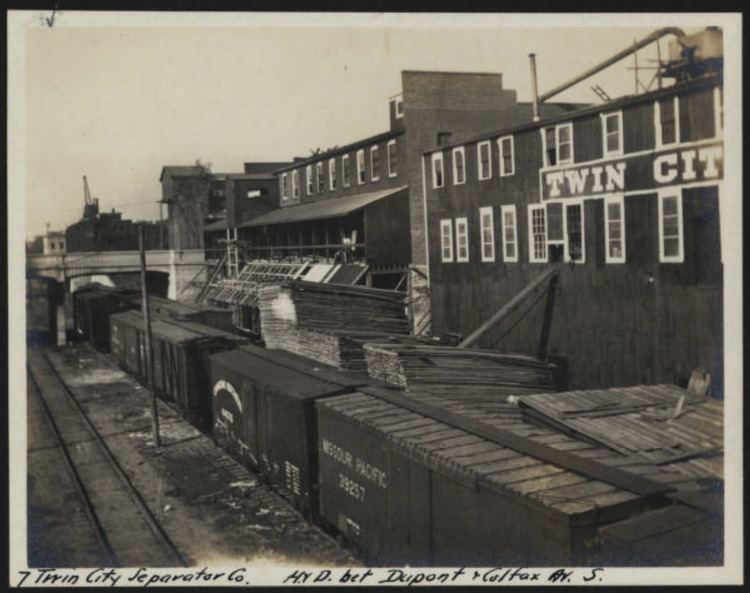Type Short-line railroad | Closed 1971 | |
 | ||
Status Some in use, some abandoned Opened 12 November 1913 (1913-11-12) Owners Fairmount, Soo Line Railroad, Sunflour Railroad, Canadian Pacific Railway | ||
Fairmount and veblen railway top 11 facts
The Fairmount and Veblen Railway (F&V) was a short line railroad that operated in Richland County, North Dakota; and in Roberts and Marshall counties, South Dakota.
The railroad was incorporated in December 1912 by Clarance Paulson of Minneapolis MN, Julius Roshall, L.R. Roshall, George Anderson, and P.S. Hanson. Was put into operation December 1, 1914. Clarence Paulson, also known as C.A. Paulson, was one of the 24 businesses located in Minneapolis Railroad district in the early 1900s. He owned a building on the north edge called the Twin City Separator Company.
C.A. Paulson's involvement in building Fairmount and Veblen Railway, ensured greater distribution of products by Minneapolis manufacturer's, when the short lines linked up to larger lines. This purpose is clearly demonstrated, the partners sold the rail line shortly after it was built. At the time Fairmount and Veblen was built, C.A. Paulson was producing butter tubs and other items, that could be distributed quickly through railway channels quickly. During the industrial revolution, production changed and evolved quickly. Once refrigerators were born, butter tubs were out. Some of C.A. Paulson's firms: Twin City Separator Company, Emerson Manufacturing, Colfax Manufacturing & Marshall Motor Company (later Jari Products).
The photo of this building shows a large, deep trench that was created in 1912–1916 as a grade separation for the Chicago, Milwaukee and Saint Paul Railroad. Twin City Separator Company Building Early Minneapolis Business Firms_Twin City Separator. Only the wall of the Twin City Separator building remains, and listed on the historical society to identify how rail/transportation was used in the early 1900s. The photos demonstrate the importance of manufactures position alongside railroad lines.
In 1913, the constructed trackage from Fairmount, North Dakota southward into South Dakota to Rosholt, then westward to Claire City and Veblen. The line was extended southward the following year, from Veblen to Roslyn, and then eastward to Grenville. A steam locomotive acquired from the Minneapolis, St. Paul and Sault Ste. Marie Railway (“Soo Line”) was used on the railroad.
The first meeting to discuss the possibility of such a line was held February 4, 1913 at Winans Hall in Harmon Township. Construction began in April, 1913, and on November 12, 1913, the first train came through Rosholt. "(Rosholt) proposed that farmers along the right-of-way for the distance of roughly eight to ten miles on each side contribute $200 for each quarter section of land, either owned or farmed. The money was to be in the form of a loan, with the notes secured by a mortgage in the new railroad. By this means, Mr. Rosholt hoped to raise one-half the cost of building the railroad, with himself to furnish the balance." (Orlando Bjork, 1988 Rosholt-Victor History Book)
The town of Rosholt was named for Julius Rosholt, builder of the F&V, in appreciation for his fair dealings.
In 1915 the F&V was acquired by the Soo Line, and its trackage operated as a branch line by that railroad. The portion of the line between Veblen and Grenville was abandoned in 1971, and in 2000 the trackage between Rosholt and Veblen was sold to the newly formed Sunflour Railroad. Trackage north of Rosholt remained in use in 2006, operated by the Canadian Pacific Railway, the Soo Line's corporate successor.
